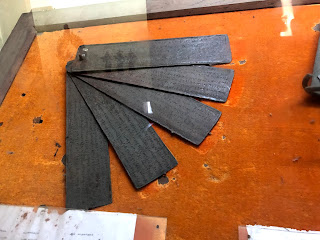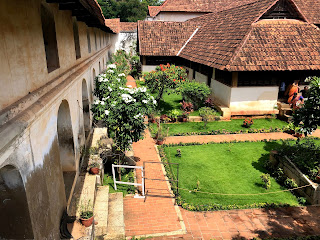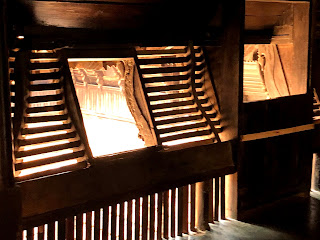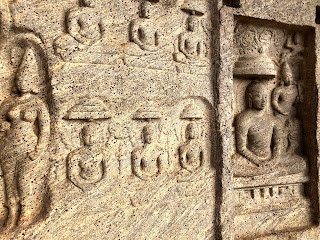Leaving Kanyakumari we headed north along the NH 44 highway for a short drive of about an hour and a half to the town of Thirunelveli (known as Tinnavely in British times). The Thamirabarani river runs through here. We stayed at the GRT Hotel. Brand-new hotel, very modern, clean and comfortable. Very nice for a small town. It gave us a good base for the next 3 days as we explored and experienced the temples along the Thamiraparani to the west of the NH 44.
The Thamirabarani is one the few perennial rivers in Tamil Nadu. It originates in the Pothigai Hills of the Western Ghats and reaches the Gulf of Mannar at Thoothukudi. We did meet this river earlier in our trip at Thoothukudi near its estuary. It is steeped in Tamil history. The river used to be known as the Tanporunai or Porunai (பொருனை) in Sangam poems. Thamiram means copper or red. It seems to be an ancient name that has sometimes been given to the island of Sri Lanka. The speculations about the connection are endless, interesting and historical.
The land in the catchment basin of the Thamiraparani has historically been known as the Then Paandi Cheemai. It has been the hinterland where the Pandian kings sought refuge whenever they felt threatened by their northern foes. They include places like Thirunelveli, Tenkasi and Thoothukudi. The dialect spoken here is distinct.
Here in the cradle of the Tamil language, to the west and upwards rise the mountains of the Western Ghats and to the east and downwards is the sea. That is why in the Tamil language, some say, the word for the direction west and up are the same, mel (மேல்) and the word for east and down are the same keezh (கீழ்).

































































